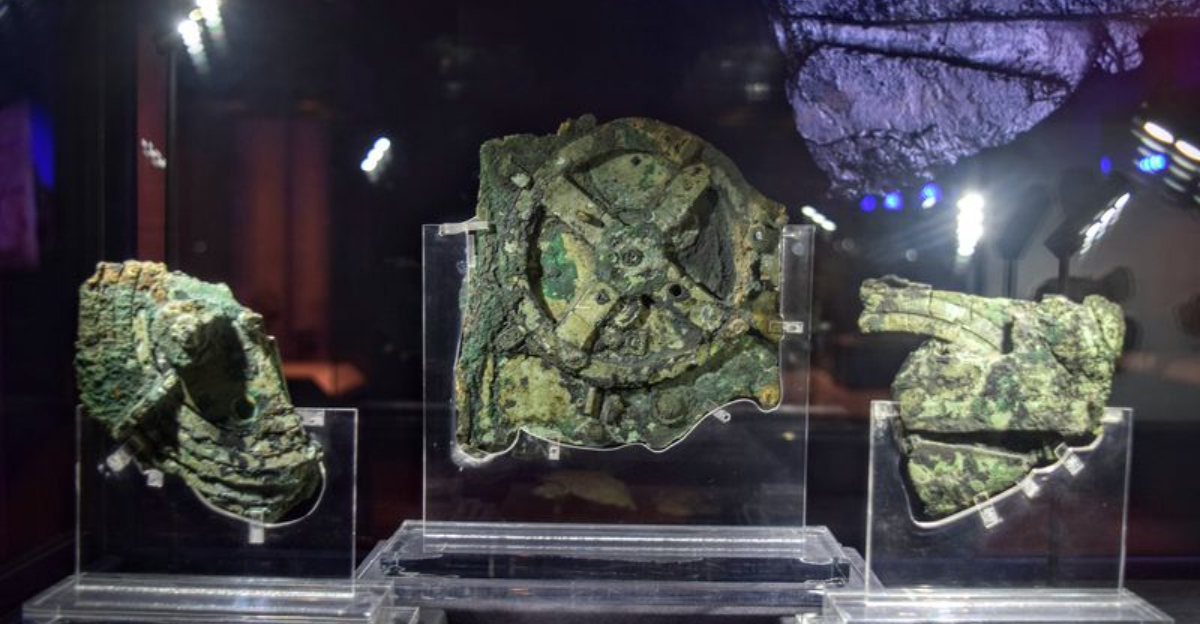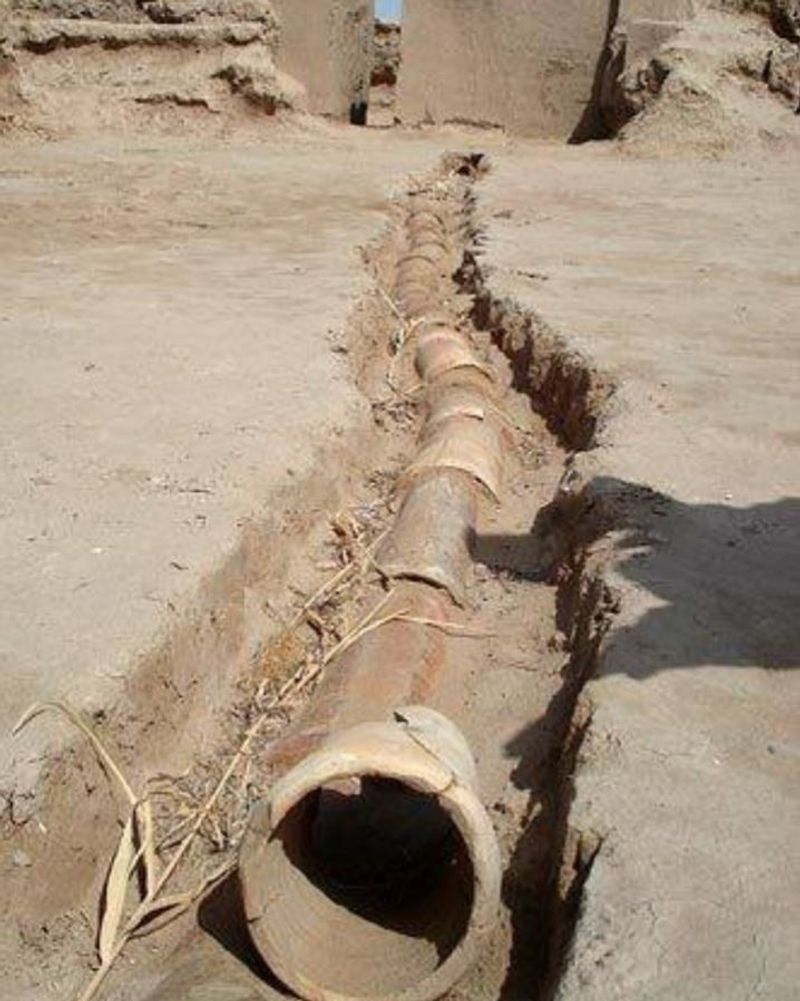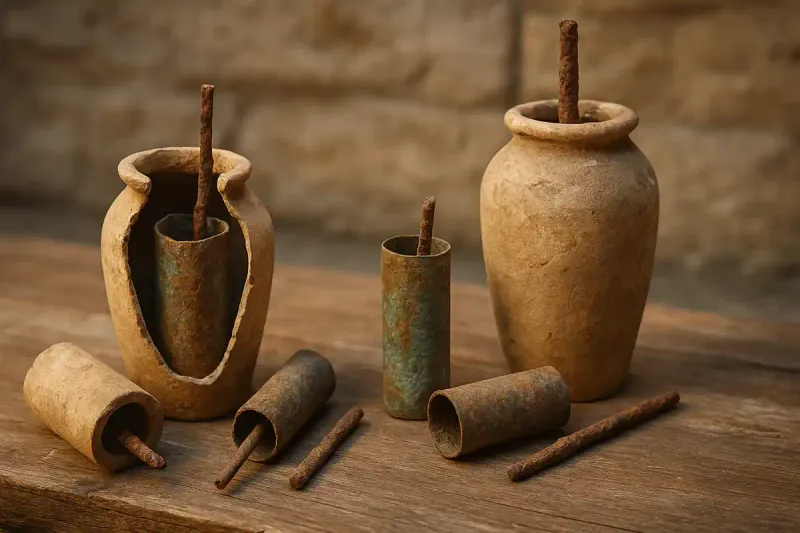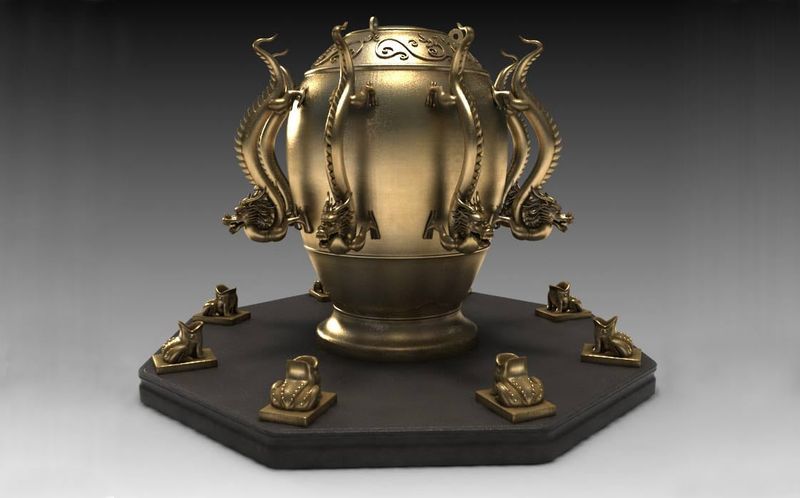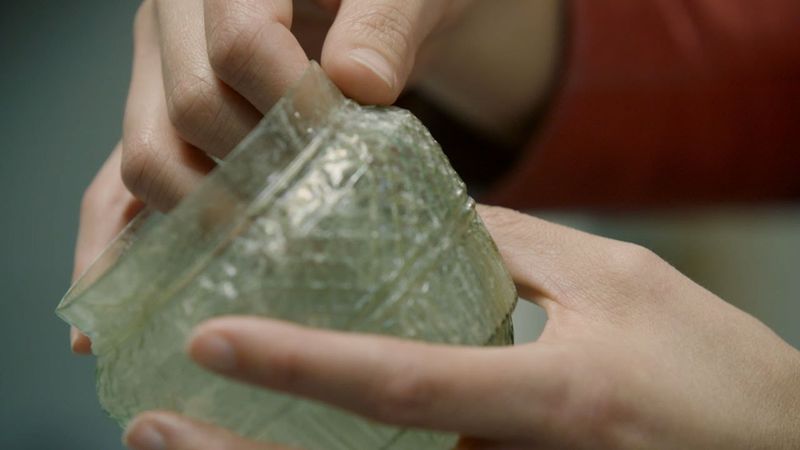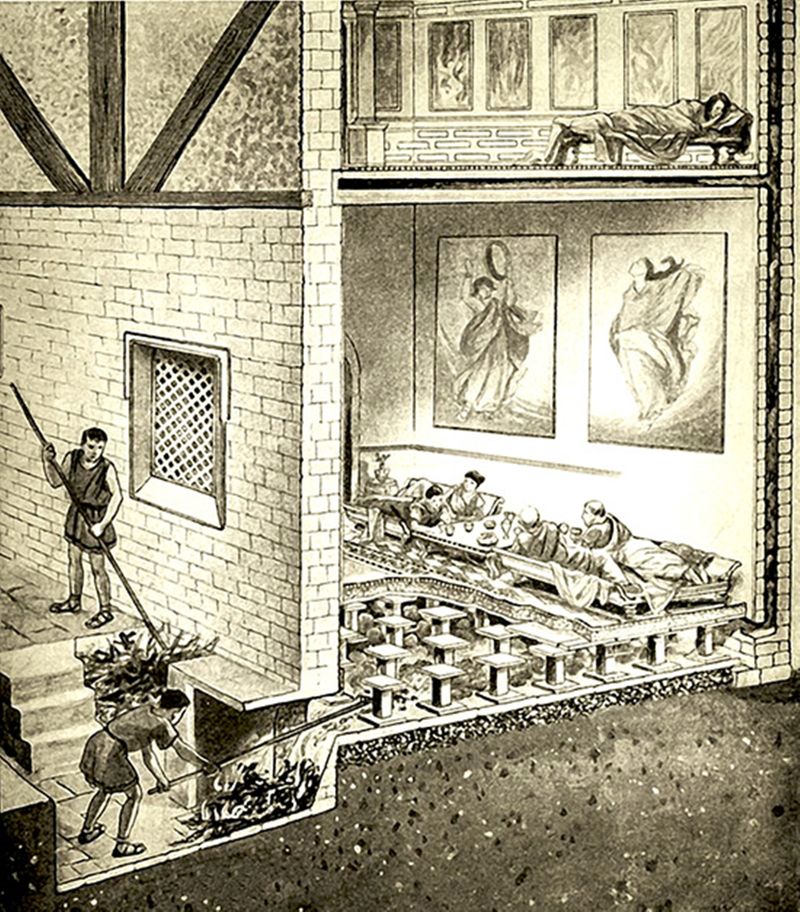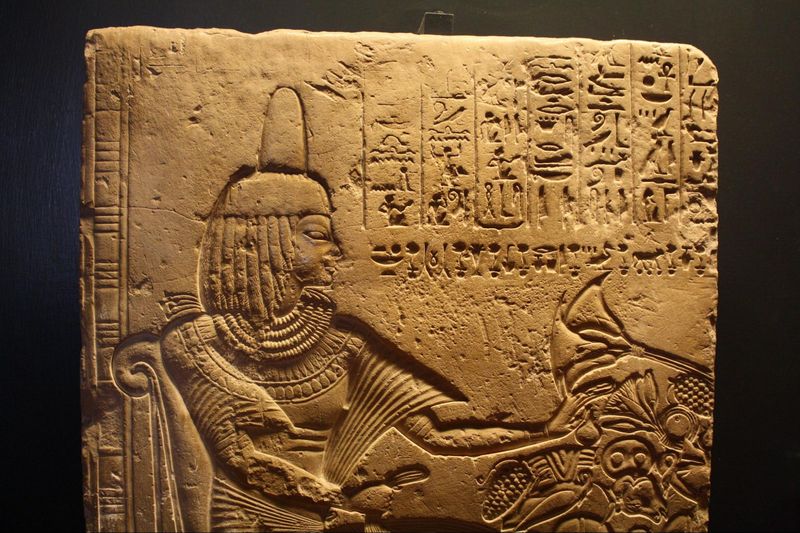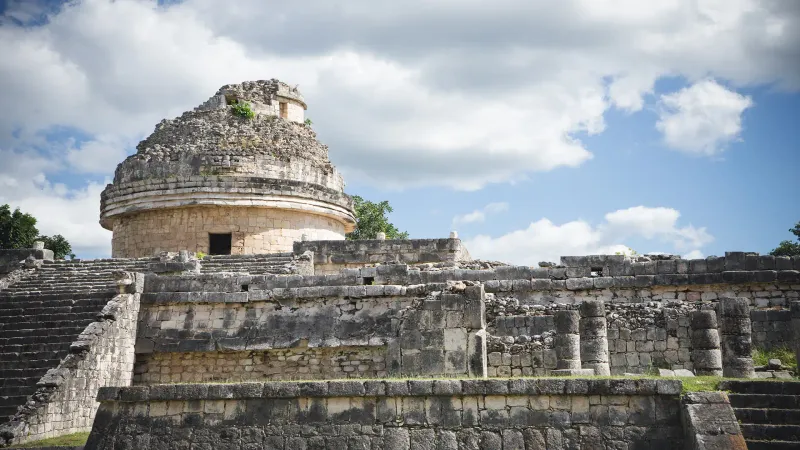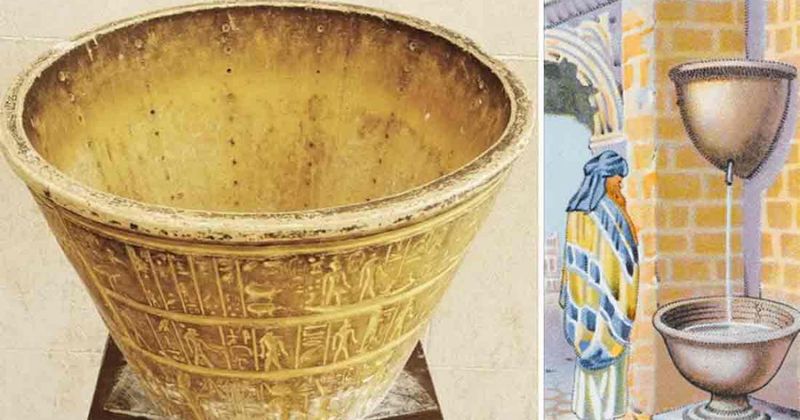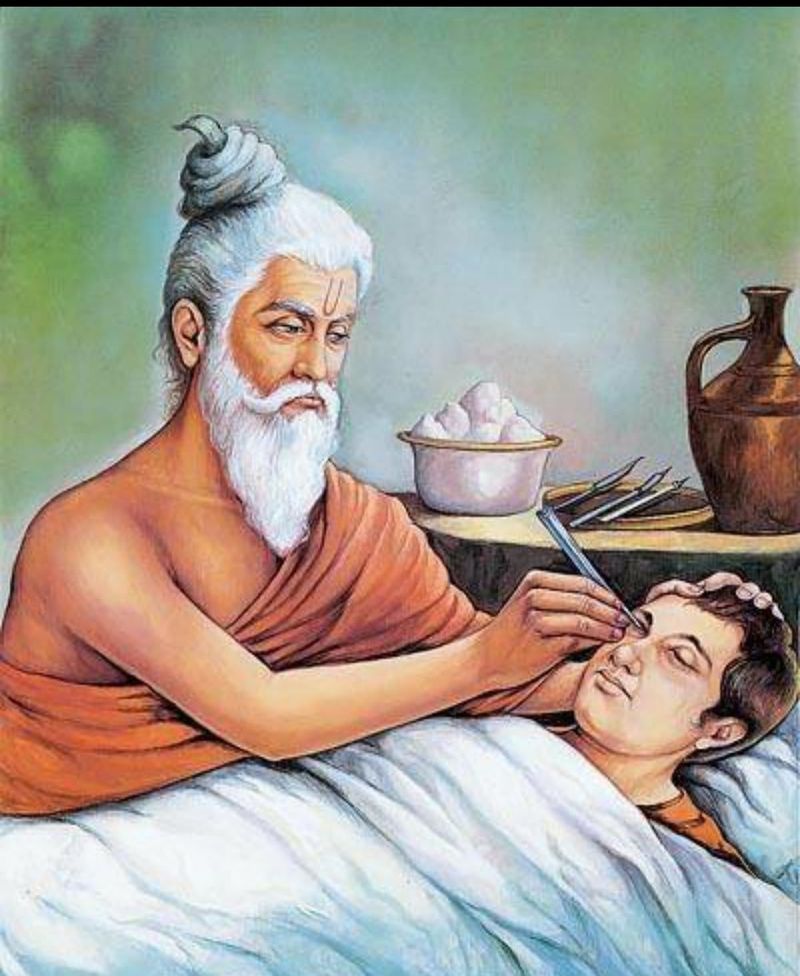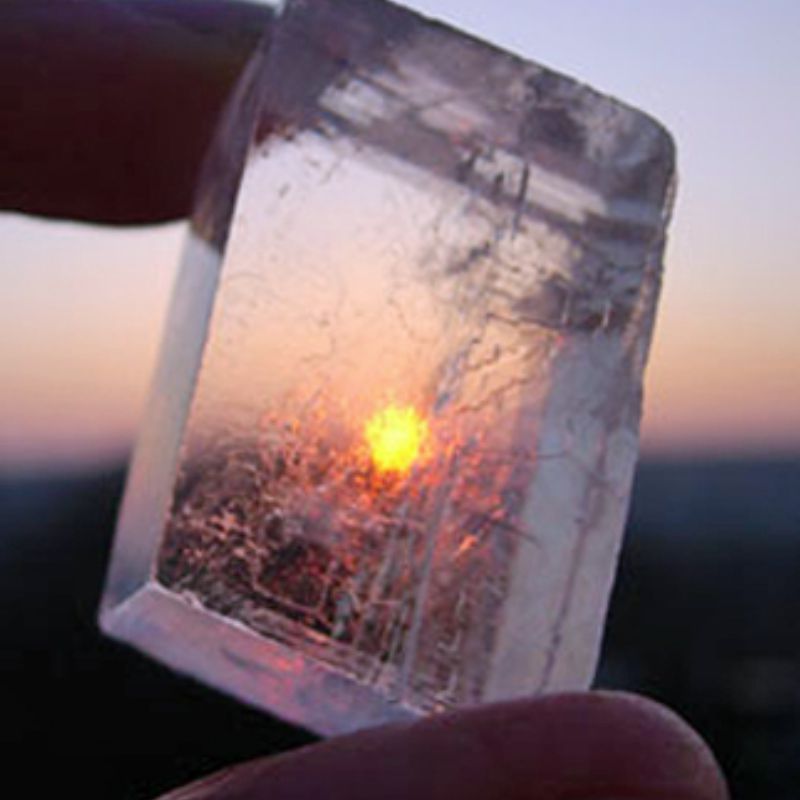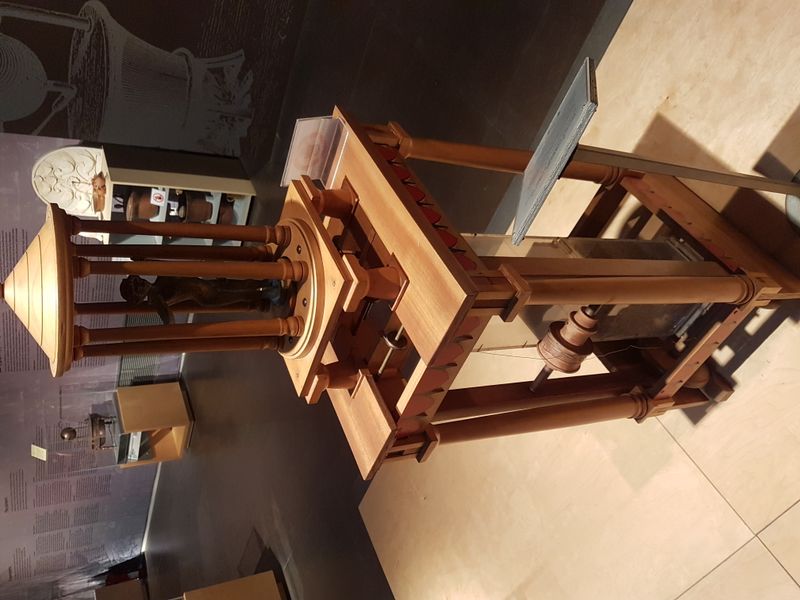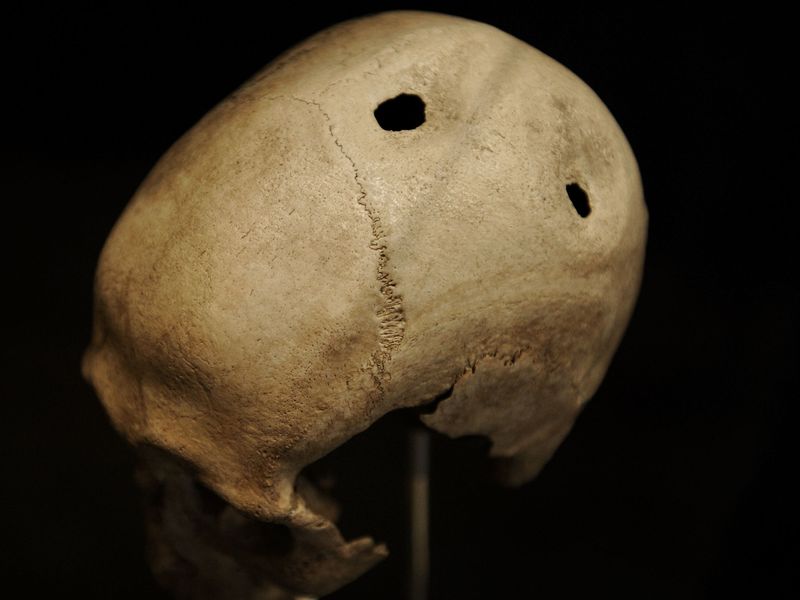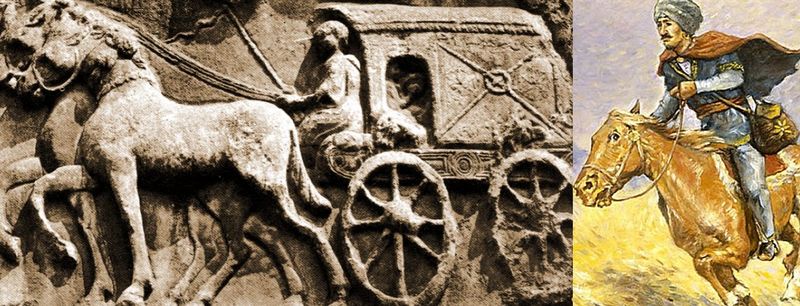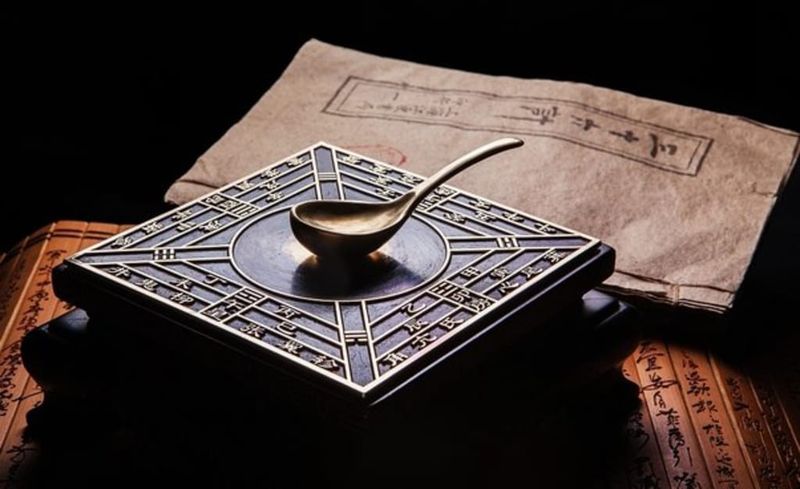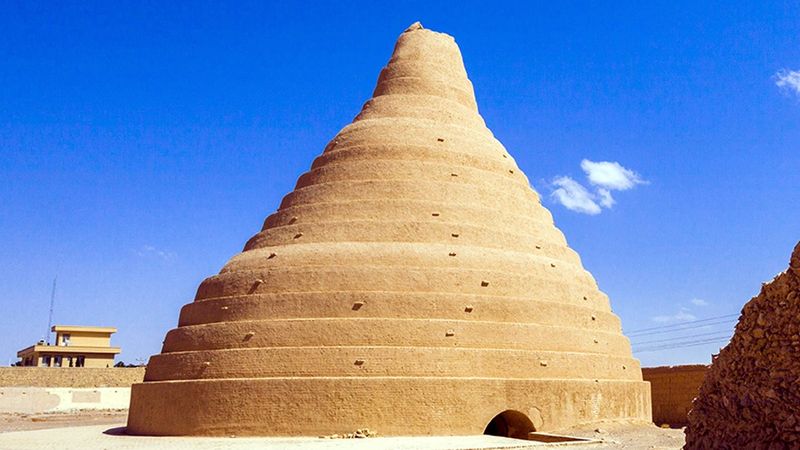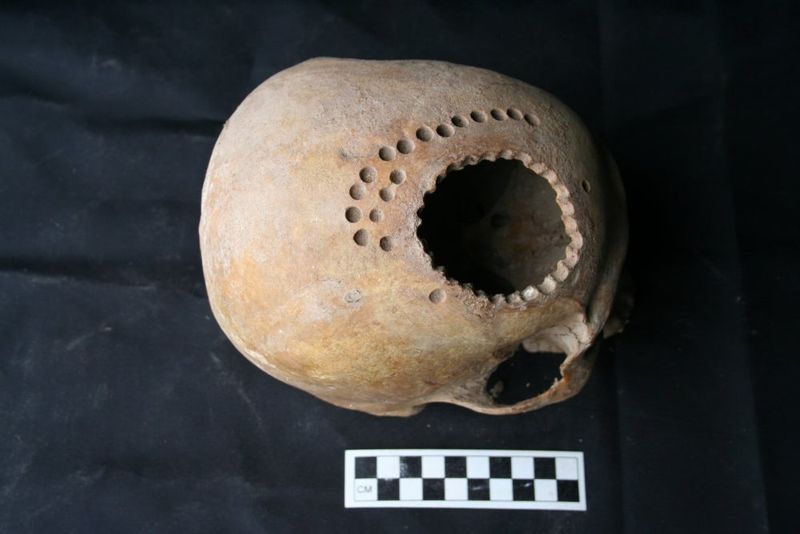Think innovation is a modern thing? Think again. Ancient civilizations weren’t just building pyramids — they were crafting mind-blowing inventions that defied the limits of their time. From surgical tools to early computers, these 25 breakthroughs prove that ancient ingenuity was light-years ahead of its era.
1. Roman Concrete (Rome, ~200 BCE)
The magic of Roman concrete lies in its endurance. Structures like the Pantheon testify to its remarkable longevity. Unlike modern concrete, which deteriorates over time, Roman concrete becomes stronger.
The secret ingredient? Volcanic ash, which reacts with seawater to strengthen the mix. This volcanic blend not only makes structures resilient but also helps them heal over time.
Modern scientists still study this ancient formula, hoping to unlock its secrets for today’s construction challenges. Roman concrete remains a towering testament to ancient engineering prowess.
2. Indus Valley Plumbing (India/Pakistan, ~2500 BCE)
In the heart of the ancient Indus Valley civilization, a marvel of urban planning emerged: a sophisticated plumbing system. Long before modern sanitation, these ancient cities boasted indoor toilets and elaborate drainage networks.
Excavations reveal terracotta pipes and expertly constructed drains, highlighting an astonishing degree of civic planning. These systems ensured not only sanitation but also public health.
The ingenuity displayed challenges our assumptions about ancient technologies. The Indus Valley’s legacy is not just in its artifacts, but in its water management techniques that were centuries ahead.
3. The Baghdad Battery (Mesopotamia, ~250 BCE)
Discovered in the ruins of Mesopotamia, the so-called Baghdad Battery adds a spark to history. These clay jars, with copper and iron components, hint at the possibility of ancient electricity.
Though their purpose remains debated, many theorize they served as primitive batteries for electroplating. Ingenious for their time, these devices could produce small currents.
Whether for electroplating or mystical rituals, the Baghdad Battery symbolizes ancient curiosity and experimentation. The idea of ancient electricity continues to intrigue scientists and historians alike.
4. Greek Fire (Byzantine Empire, ~7th Century)
Greek Fire, the Byzantine Empire’s secret weapon, conjures images of medieval naval warfare. This incendiary concoction ignited battles, capable of burning even on water.
Its exact formula remains a mystery, closely guarded by the Byzantines and lost to time. The impact of Greek Fire on warfare, however, is well documented.
A weapon of terror and tactical advantage, Greek Fire secured many Byzantine victories. Its enigmatic nature, combined with its devastating effect, leaves a fiery mark on history.
5. Surgical Tools in Ancient Egypt (1600 BCE)
In the realm of ancient medicine, Egyptian surgeons wielded tools that echo those of modern times. Scalpels, clamps, and forceps crafted millennia ago were used in surgeries that astound today’s medical professionals.
Found in tombs and depicted in medical papyri, these tools reveal the Egyptians’ profound understanding of anatomy. Procedures such as trepanation and dental work were commonplace.
Their advancements laid the groundwork for future medical practices. Ancient Egyptian surgeons not only healed but also pushed the boundaries of medical knowledge.
6. Seismograph (China, 132 CE)
Zhang Heng, a Chinese polymath, engineered a marvel: the world’s first seismograph. This intricate device detected distant earthquakes, long before modern seismology began.
Crafted with dragons and toads, it utilized shifting weights to indicate tremors’ direction. Its accuracy offered unprecedented awareness of seismic activity.
Zhang Heng’s seismograph symbolizes the innovative spirit of ancient China. It highlights a profound understanding of the Earth’s movements, paving the way for future advancements in earthquake detection.
7. Flexible Glass (Rome, 1st Century CE)
The tale of flexible glass shimmers in Roman lore. Legend speaks of a glass that could bend without breaking, a potential threat to the metal industry.
This mysterious material, created by an unknown craftsman, was supposedly shown to Emperor Tiberius. Fearing economic upheaval, he ordered its destruction.
Whether myth or reality, the story of flexible glass illuminates ancient Rome’s innovative spirit. It teases the imagination, hinting at lost technologies that could have reshaped industries.
8. Archimedes’ Screw (Greece, ~250 BCE)
The genius of Archimedes is captured in his eponymous screw. Designed to move water uphill, this invention revolutionized irrigation.
Its simple yet effective mechanism involves a spiral within a hollow cylinder. Water travels upward as the device turns, a principle still in use today.
From agriculture to ship bilges, the Archimedes Screw exemplifies timeless utility. It showcases ancient Greek ingenuity, merging practicality with innovation to solve everyday challenges.
9. The Antikythera Mechanism (Greece, ~100 BCE)
Unearthed from an ancient shipwreck, the Antikythera Mechanism captures imaginations with its intricate gears and dials. This artifact, dubbed the world’s first analog computer, was used to predict astronomical events, such as eclipses and planetary positions.
Despite its age, the mechanism’s complexity still challenges modern understanding. Imagine craftsmen, over 2,000 years ago, meticulously constructing this device that mimicked the universe’s dance.
Its discovery not only reshaped our historical understanding but also inspired countless studies, seeking to unravel its mechanical genius and the secrets it might still hold.
10. Hypocaust Heating (Rome, ~100 BCE)
The luxury of Roman baths was amplified by hypocaust heating, an early form of central heating. This system warmed rooms from beneath, a marvel of engineering.
Brick stacks under floors allowed hot air to circulate, offering warmth in villas and public baths alike. Such comfort was lost for centuries in Europe.
The Romans’ attention to comfort and innovation is embodied in the hypocaust. It remains a testament to their advanced understanding of heating and architecture.
11. Toothpaste (Egypt, ~5000 BCE)
Long before modern dental care, ancient Egyptians crafted a form of toothpaste. Ingredients like rock salt, mint, and iris flowers were combined for oral hygiene.
This ancient paste not only freshened breath but also cleaned teeth, demonstrating an early understanding of health and wellness.
The innovation of Egyptian toothpaste reflects their commitment to personal care. It’s an intriguing glimpse into the daily lives of a civilization that valued cleanliness.
12. Windmills (Persia, ~500 CE)
In ancient Persia, the power of the wind was harnessed through innovative windmills. Vertical-axis designs were utilized for grinding grain and pumping water.
These windmills marked an early venture into renewable energy, capturing the spirit of sustainability and efficiency.
The Persian windmills demonstrate an understanding of mechanical advantage and natural resources, laying the groundwork for future wind energy technologies.
13. The Iron Pillar of Delhi (India, ~400 CE)
The Iron Pillar of Delhi stands as a metallurgical marvel. Crafted over 1,600 years ago, it resists rust and corrosion, baffling modern scientists.
This 7-meter tall structure reflects the advanced skills of ancient Indian blacksmiths. Its composition, primarily iron, challenges our understanding of metallurgy.
The pillar serves not only as a historical monument but also as an enduring testament to India’s ancient technological prowess.
14. Mayan Astronomy (Mesoamerica, ~1000 CE)
Mayan astronomers gazed at the cosmos with astounding precision. Their understanding of celestial movements enabled them to predict solar eclipses and track planets.
The Mayans constructed observatories and developed complex calendars, showcasing their astronomical expertise. These achievements were unparalleled at the time.
Their legacy endures in the accuracy of their predictions, proving the sophistication of Mayan science and observation.
15. Water Clocks (Ancient Egypt, Greece)
In a world before mechanical clocks, water clocks marked the passage of time. Ancient Egyptians and Greeks crafted these devices to measure hours with flowing water.
These ingenious clocks utilized calibrated bowls and drips, offering surprising accuracy for millennia. They set the standard for timekeeping.
The legacy of water clocks lies in their elegance and practicality, bridging human curiosity with technological achievements.
16. Cataract Surgery (India, ~500 BCE)
Ancient Indian surgeons boldly undertook cataract surgeries, restoring vision with metal tools. This medical feat, performed without anesthesia, demonstrates their advanced surgical skills.
Texts and instruments reveal their techniques, offering insight into early eye care. These surgeries were not only successful but also reflective of a deep understanding of medicine.
The pioneering spirit of these ancient doctors echoes through time, highlighting India’s contributions to medical science.
17. Viking Sunstone (Scandinavia, ~900 CE)
The enigmatic Viking Sunstone, a legendary navigational aid, guided seafarers through overcast skies. Modern tests validate its potential to locate the sun’s position.
This crystal, possibly calcite, could polarize light, allowing Vikings to maintain course even without visible landmarks.
The Sunstone exemplifies Viking innovation and exploration, a hidden gem in maritime history that continues to fascinate researchers today.
18. Automata (Greece, ~3rd Century BCE)
Hero of Alexandria’s automata blurred the lines between magic and engineering. These self-moving devices, including a coin-operated machine, amazed ancient onlookers.
Using water, steam, and air, Hero crafted machines that could perform tasks autonomously, a precursor to modern automation.
His inventions highlight ancient creativity and technical prowess, leaving a legacy of wonder and exploration of mechanical possibilities.
19. Incan Brain Surgery (Andes, ~1000 CE)
Incan surgeons practiced trepanation, a technique involving the removal of a portion of the skull to treat injuries. With survival rates as high as 80%, these surgeries were remarkably successful.
Skilled practitioners used metal tools and herbal medicines, showcasing their advanced understanding of cranial surgery.
This medical practice underscores the Incan’s sophisticated healthcare system, emphasizing their innovative approach to healing.
20. Underwater Concrete (Rome, ~100 BCE)
Roman engineers made waves with underwater concrete, building enduring harbors. This innovative mix included volcanic ash, allowing it to set in water.
The resulting structures have withstood centuries, bearing witness to Roman architectural genius. These feats highlight the adaptability and foresight of ancient engineers.
The technique remains influential, inspiring modern advancements in maritime construction.
21. Postal System (Persian Empire, ~500 BCE)
The Persian Empire’s postal system, akin to an ancient FedEx, revolutionized communication. A network of relay riders and stations spanned vast distances, ensuring swift delivery.
This system enabled efficient administrative control and information dissemination, reflecting the empire’s organizational prowess.
Persia’s postal innovation set a foundation for future communication networks, illustrating the enduring need for connectivity.
22. Advanced Maps (Greece, ~200 BCE)
Eratosthenes, a Greek polymath, mapped the world with astonishing accuracy. His calculations of Earth’s circumference were within 1% of modern measurements.
Through keen observation and mathematical genius, he charted distances and developed geographical concepts that guided explorers.
Eratosthenes’ maps remain a testament to ancient Greek intellectual achievements, influencing cartography for centuries.
23. Compass-Like Navigation (China, ~200 BCE)
Chinese navigators harnessed the Earth’s magnetism using lodestone compasses. These early navigation tools provided accurate direction on land and sea.
With this innovation, Chinese travelers expanded their horizons, exploring new territories and facilitating trade.
The lodestone compass marks a pivotal advancement in navigation, highlighting China’s contributions to exploration and technology.
24. Refrigeration (Ancient Iran, ~400 BCE)
In the arid landscape of ancient Iran, Yakhchals kept ice year-round without electricity. These dome-shaped structures exemplified ingenious passive cooling techniques.
By using subterranean chambers and evaporative cooling, Yakhchals preserved perishable goods and provided relief from the heat.
This early refrigeration method underscores the adaptability and resourcefulness of ancient Persian society.
25. Brain Drain Surgery (Peru, ~600 CE)
In ancient Peru, trepanation was refined into a sophisticated procedure. Specialized tools and techniques were developed to relieve cranial pressure.
With high survival rates, Peruvian surgeons demonstrated remarkable skill in neuro-surgery, contributing to medical knowledge.
This practice highlights the advanced healthcare system of pre-Columbian civilizations, blending tradition with innovation.
